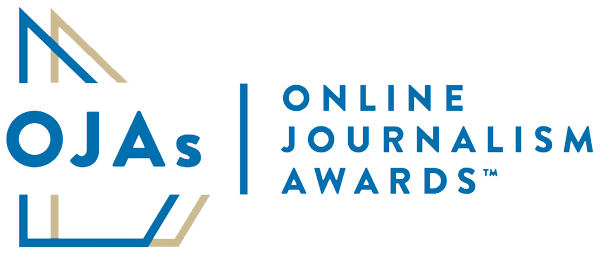

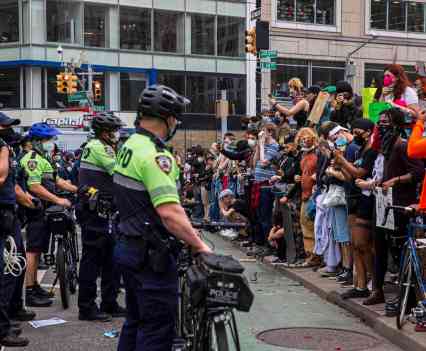
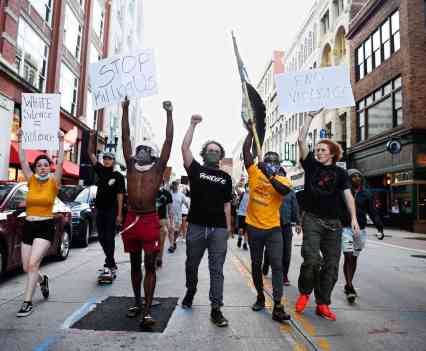
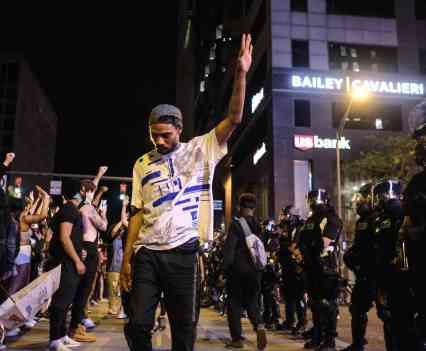
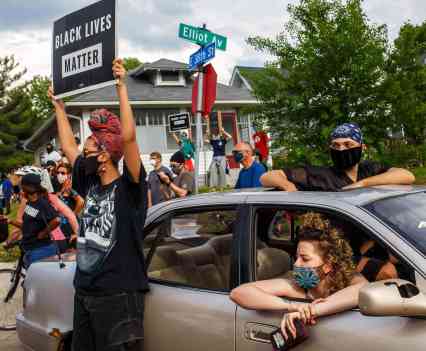
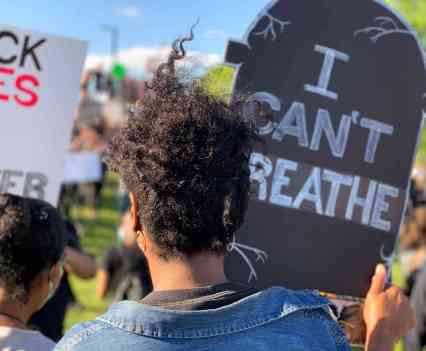
Organization
The New York Times
Award
Excellence in Social Justice Reporting, Portfolio
Program
2021
Entry Links
Link 1
Link 2
Link 3
The summer of 2020 was a season of reckoning. In the days and weeks after George Floyd was murdered in the waning light of Memorial Day, an estimated 15 million to 26 million people participated in about 4,700 demonstrations across America, accounting for the largest movement in the country’s history.
That moment had been building; the air was already charged. A killer virus was ripping through Black communities. Bullets, too. Ahmaud Arbery. Breonna Taylor. And then George Floyd, whose encounter with a white police officer who pressed his left knee on Mr. Floyd’s neck unleashed one of the most explosive trials of American racism in modern times.
Violence against African-Americans is a familiar song in this country. But never before had the cries carried this kind of muscle. Among American voters, support for the Black Lives Matter movement grew in the first two weeks of protests almost as much as it did in the preceding two years.
Within 24 hours of Mr. Floyd’s death, demonstrations were organized in a half-dozen U.S. cities, with protesters chanting the names of Black people subjected to police brutality. The number of places doubled. Then tripled.
The New York Times immediately responded. Deploying a range of journalistic tools, Times journalists chronicled in real-time the unfolding unrest and the demonstrations against systemic racism. Across the country, the police responded with force. In New York, where thousands took to the streets night after night, the New York Police Department said it used restraint during the protests. But officers were repeatedly recorded punching, tackling, beating and shoving demonstrators. Times journalists found more than 60 videos that show police using force on protestors during the first 10 days of demonstrations in the city after the killing of Mr. Floyd.
The Times also peeled back the layers of entrenched abuses, with ground-breaking reporting that used data, documents, interviews and videos to reveal the pervasiveness of police misconduct across the United State and, specifically, in Minneapolis, where the police used force against Black people at a rate at least seven times that of white people.
Through its live coverage and a series of articles, videos and maps, The Times put readers at the core of its strategy and invited them to participate in the reporting, helping them better understand the scope of the moment.
The Online Journalism Awards™ (OJAs), launched in May 2000, are the only comprehensive set of journalism prizes honoring excellence in digital journalism around the world.
